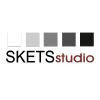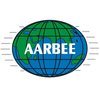Filter interviews by
Pan Gulf Technologies Interview Questions and Answers
10 Interview questions
The unit of moment is Newton meter (Nm) or foot-pound (ft-lb).
The unit of moment is a combination of a force and a distance.
In the metric system, moment is measured in Newton meters (Nm).
In the imperial system, moment is measured in foot-pounds (ft-lb).
Steel structures are used in industries due to their strength, durability, and cost-effectiveness.
Steel is a strong material, capable of supporting heavy loads and withstanding harsh environmental conditions.
Steel structures are durable and have a long lifespan, reducing the need for frequent repairs or replacements.
Steel construction is cost-effective compared to other materials, as it is readily available and ea...
Welded connections are generally considered good in steel structures due to their strength and durability.
Welded connections provide high strength and stiffness
They are more durable and require less maintenance compared to bolted connections
Welded connections are more resistant to fatigue and vibration
Examples include fillet welds, groove welds, and plug welds
The father of mix concrete ratio is Duff Abrams.
Duff Abrams is known as the father of mix concrete ratio.
He developed the Abrams' Law which is used to determine the water-cement ratio in concrete mix design.
Abrams' Law states that the strength of concrete is inversely proportional to the water-cement ratio.
PV Elite is a software used for designing pressure vessels and heat exchangers in the oil and gas industry.
PV Elite is commonly used by civil engineers in the oil and gas industry for designing pressure vessels and heat exchangers.
The software allows engineers to analyze and design pressure vessels according to various international codes and standards.
PV Elite provides tools for designing components such as shell...
Shear force and bending moment diagrams are graphical representations of the internal forces in a structural element.
Shear force diagram shows the variation of shear force along the length of the beam.
Bending moment diagram shows the variation of bending moment along the length of the beam.
Both diagrams are essential for analyzing the structural behavior of a beam under different loading conditions.
SFD (Shear Force Diagram) and BMD (Bending Moment Diagram) show the variation of shear force and bending moment along the length of a beam.
SFD shows the variation of shear force along the length of a beam.
BMD shows the variation of bending moment along the length of a beam.
SFD and BMD are essential for analyzing the internal forces in a beam.
The point of zero shear force on SFD corresponds to the point of maximum ...
Different types of welds include fillet welds, groove welds, plug welds, and slot welds.
Fillet welds are used to join two surfaces at right angles, forming a triangular cross-section.
Groove welds are used to join two pieces of metal that are parallel or nearly parallel.
Plug welds are used to fill a hole on one workpiece with weld metal.
Slot welds are used to join two overlapping pieces of metal by filling a slot w...
Revit Str tool test is a test to evaluate a candidate's proficiency in using the Revit Structure tool.
Revit Str tool test evaluates candidate's ability to use Revit Structure tool efficiently
Candidates may be asked to demonstrate their skills in creating structural elements like beams, columns, and slabs
Knowledge of creating structural connections and detailing may also be tested
I use parameters such as dimensions, materials, connections, and tolerances in major projects.
Dimensions of structural components
Materials used for construction
Types of connections between components
Tolerances for fabrication and assembly
Pan Gulf Technologies Interview Experiences
13 interviews found
I applied via LinkedIn and was interviewed in Dec 2024. There was 1 interview round.
(2 Questions)
- Q1. Information about the wedding process
- Q2. Information about the the weld nomenclature
Interview Preparation Tips
I applied via Campus Placement and was interviewed in Jun 2024. There were 3 interview rounds.
Questions on basics of steel structures and on basic reasoning and aptitude. Anyone with basic knowledge of steel structures can clear it.
(5 Questions)
- Q1. What is the difference between detailing and designing.
- Ans.
Detailing involves creating specific drawings and plans based on the design, while designing is the process of creating the initial concept and calculations.
Designing is the process of coming up with the initial concept and calculations for a structure or project.
Detailing involves creating specific drawings, plans, and specifications based on the design.
Designing requires a deep understanding of engineering principles...
- Q2. Different Types of welds
- Ans.
Different types of welds include fillet welds, groove welds, plug welds, and slot welds.
Fillet welds are used to join two surfaces at right angles, forming a triangular cross-section.
Groove welds are used to join two pieces of metal that are parallel or nearly parallel.
Plug welds are used to fill a hole on one workpiece with weld metal.
Slot welds are used to join two overlapping pieces of metal by filling a slot with w...
- Q3. Which connection in steel structures are good.
- Ans.
Welded connections are generally considered good in steel structures due to their strength and durability.
Welded connections provide high strength and stiffness
They are more durable and require less maintenance compared to bolted connections
Welded connections are more resistant to fatigue and vibration
Examples include fillet welds, groove welds, and plug welds
- Q4. Why industries are constructed using steel structures.
- Ans.
Steel structures are used in industries due to their strength, durability, and cost-effectiveness.
Steel is a strong material, capable of supporting heavy loads and withstanding harsh environmental conditions.
Steel structures are durable and have a long lifespan, reducing the need for frequent repairs or replacements.
Steel construction is cost-effective compared to other materials, as it is readily available and easy to...
- Q5. SFD and BMD of different types of beams.
- Ans.
SFD (Shear Force Diagram) and BMD (Bending Moment Diagram) show the variation of shear force and bending moment along the length of a beam.
SFD shows the variation of shear force along the length of a beam.
BMD shows the variation of bending moment along the length of a beam.
SFD and BMD are essential for analyzing the internal forces in a beam.
The point of zero shear force on SFD corresponds to the point of maximum bendi...
(5 Questions)
- Q1. Are you okay with companies terms and conditions
- Ans.
Yes, I am okay with companies terms and conditions.
I am willing to review and understand the terms and conditions before accepting them.
I am open to discussing any concerns or clarifications regarding the terms and conditions.
I will comply with the company's policies and procedures as outlined in the terms and conditions.
- Q2. What are your strengths and weaknesses.
- Ans.
My strengths include problem-solving skills and attention to detail. My weaknesses include public speaking and time management.
Strengths: problem-solving skills
Strengths: attention to detail
Weaknesses: public speaking
Weaknesses: time management
- Q3. What are your hobbies
- Ans.
My hobbies include playing the guitar, hiking, and reading science fiction novels.
Playing the guitar
Hiking
Reading science fiction novels
- Q4. About family background and siblings.
- Q5. If we hire you how many years will you work with us.
- Ans.
I am committed to growing and developing my career with your company for the long term.
I am looking for a long-term career opportunity where I can grow and develop my skills.
I am committed to contributing to the success of the company and building a strong professional relationship.
I plan to stay with the company as long as there are opportunities for growth and advancement.
I am open to discussing potential career path...
Interview Preparation Tips
I applied via Campus Placement and was interviewed in Jun 2024. There were 3 interview rounds.
Really easy aptitude test based on riddle questions and some of which were technical
(4 Questions)
- Q1. Parameters used in my major projects
- Ans.
I use parameters such as dimensions, materials, connections, and tolerances in major projects.
Dimensions of structural components
Materials used for construction
Types of connections between components
Tolerances for fabrication and assembly
- Q2. What were the problems i faced during my project
- Q3. What is the unit of moment
- Ans.
The unit of moment is Newton meter (Nm) or foot-pound (ft-lb).
The unit of moment is a combination of a force and a distance.
In the metric system, moment is measured in Newton meters (Nm).
In the imperial system, moment is measured in foot-pounds (ft-lb).
- Q4. BSD (Bending stress diagram) of I section beam
- Ans.
BSD of I section beam shows the distribution of bending stress along the length of the beam.
BSD is a graphical representation of bending stress distribution in an I section beam.
It helps in understanding how the bending stress varies along the length of the beam.
The diagram typically shows the maximum and minimum bending stress points.
It is important for structural engineers to analyze the BSD to ensure the beam can wi...
(1 Question)
- Q1. Personal questions
Interview Preparation Tips
- shear force diagram
- bmd
- bsd
Calculate the load-bearing capacity of a beam given its dimensions and material properties
(4 Questions)
- Q1. Drow shear force diagram and bending moment diagram
- Q2. Design software about Pv elite
- Ans.
PV Elite is a software used for designing pressure vessels and heat exchangers in the oil and gas industry.
PV Elite is commonly used by civil engineers in the oil and gas industry for designing pressure vessels and heat exchangers.
The software allows engineers to analyze and design pressure vessels according to various international codes and standards.
PV Elite provides tools for designing components such as shells, he...
- Q3. What is Water cement ratio?
- Ans.
Water cement ratio is the ratio of the weight of water to the weight of cement used in a concrete mix.
Water cement ratio is a crucial factor in determining the strength and durability of concrete.
A lower water cement ratio results in stronger and more durable concrete.
The ideal water cement ratio varies depending on the type of concrete mix and its intended use.
For example, a water cement ratio of 0.5 is commonly used ...
- Q4. Father of mix concrete ratio?
- Ans.
The father of mix concrete ratio is Duff Abrams.
Duff Abrams is known as the father of mix concrete ratio.
He developed the Abrams' Law which is used to determine the water-cement ratio in concrete mix design.
Abrams' Law states that the strength of concrete is inversely proportional to the water-cement ratio.
Skills evaluated in this interview
I applied via Company Website and was interviewed in Mar 2024. There were 3 interview rounds.
(1 Question)
- Q1. Ask about my education and skill
(1 Question)
- Q1. Three stages in which first was written test,then modelling and then interview
(1 Question)
- Q1. Ask about my previous project related questions
I applied via Company Website and was interviewed in Apr 2024. There were 2 interview rounds.
(2 Questions)
- Q1. Tell me about yourself
- Ans.
I am a BIM Modeller with 5 years of experience in creating detailed 3D models for construction projects.
I have a Bachelor's degree in Architecture
Proficient in using BIM software such as Revit and AutoCAD
Experience in coordinating with architects, engineers, and contractors to ensure accurate models
Strong attention to detail and ability to meet project deadlines
Completed projects include residential, commercial, and in...
- Q2. Questions related to Revit
(2 Questions)
- Q1. Revit Arch tool test
- Ans.
The Revit Arch tool test assesses the candidate's proficiency in using Revit Architecture software.
Demonstrate knowledge of creating and editing architectural elements in Revit
Show understanding of how to use Revit tools for modeling and documentation
Be able to navigate the Revit interface and work efficiently with the software
Provide examples of past projects where Revit Architecture was used
- Q2. Revit Str tool test
- Ans.
Revit Str tool test is a test to evaluate a candidate's proficiency in using the Revit Structure tool.
Revit Str tool test evaluates candidate's ability to use Revit Structure tool efficiently
Candidates may be asked to demonstrate their skills in creating structural elements like beams, columns, and slabs
Knowledge of creating structural connections and detailing may also be tested
Interview Preparation Tips
I applied via Indeed and was interviewed in Jan 2024. There were 2 interview rounds.
(3 Questions)
- Q1. General Civil Engineering Questions
- Q2. Draw the Shear force diagram and bending moment diagram
- Ans.
Shear force and bending moment diagrams are graphical representations of the internal forces in a structural element.
Shear force diagram shows the variation of shear force along the length of the beam.
Bending moment diagram shows the variation of bending moment along the length of the beam.
Both diagrams are essential for analyzing the structural behavior of a beam under different loading conditions.
- Q3. Question on last company experience
(1 Question)
- Q1. Job Details and other details
Business Development Executive Interview Questions & Answers
posted on 16 Aug 2024
I applied via Recruitment Consulltant and was interviewed in Feb 2024. There was 1 interview round.
(1 Question)
- Q1. Experience And Process
I applied via Job Portal

(1 Question)
- Q1. ASME codes & standard
(1 Question)
- Q1. Design software about Pv elite
- Ans.
Pv elite is a software used for designing pressure vessels and heat exchangers.
Pv elite is commonly used in the oil and gas industry for designing pressure vessels.
The software allows engineers to analyze and design pressure vessels according to various international codes and standards.
Pv elite includes features for designing heat exchangers, towers, and horizontal vessels as well.
Engineers can input design parameters...
Skills evaluated in this interview
I applied via Recruitment Consulltant and was interviewed in Feb 2023. There were 2 interview rounds.

(2 Questions)
- Q1. Tell me about yourself
- Ans.
I am a dedicated BIM Engineer with a passion for innovative design and collaboration in construction projects.
Over 5 years of experience in BIM management, focusing on enhancing project efficiency.
Proficient in software like Revit and Navisworks, having led a project that reduced clashes by 30%.
Strong background in coordinating with architects and engineers to ensure seamless integration of designs.
Successfully impleme...
- Q2. What are your salary expectations
- Ans.
I expect a competitive salary based on my skills, experience, and industry standards for a BIM Engineer.
Research industry standards: For example, BIM Engineers in my region typically earn between $70,000 and $90,000 annually.
Consider my experience: With over 5 years in the field, I believe a salary towards the higher end of that range is justified.
Evaluate the company's budget: I am open to discussing a salary that ali...
Interview Preparation Tips
Top trending discussions






Pan Gulf Technologies Interview FAQs
The duration of Pan Gulf Technologies interview process can vary, but typically it takes about less than 2 weeks to complete.
Tell us how to improve this page.
Pan Gulf Technologies Interviews By Designations
- Pan Gulf Technologies Senior Engineer Interview Questions
- Pan Gulf Technologies Trainee Civil Engineer Interview Questions
- Pan Gulf Technologies Junior Piping Engineer Interview Questions
- Pan Gulf Technologies Business Development Executive Interview Questions
- Pan Gulf Technologies BIM Engineer Interview Questions
- Pan Gulf Technologies Civil Engineer Interview Questions
- Pan Gulf Technologies Auto CAD Designer Interview Questions
- Pan Gulf Technologies Tekla Modeller Interview Questions
- Show more
Interview Questions for Popular Designations
Overall Interview Experience Rating
based on 14 interview experiences
Difficulty level
Duration
Interview Questions from Similar Companies
Pan Gulf Technologies Reviews and Ratings
based on 145 reviews
Rating in categories
|
Tekla Modeller
42
salaries
| ₹4 L/yr - ₹7.5 L/yr |
|
Team Lead
27
salaries
| ₹6 L/yr - ₹16.3 L/yr |
|
Detailer
24
salaries
| ₹2.6 L/yr - ₹5.8 L/yr |
|
BIM Engineer
23
salaries
| ₹4.3 L/yr - ₹8.5 L/yr |
|
Checker
21
salaries
| ₹4.1 L/yr - ₹9 L/yr |

Zealous Services

DGS Technical Services

Skets Studio

Prothious Engineering Services
- Home >
- Interviews >
- Pan Gulf Technologies Interview Questions















